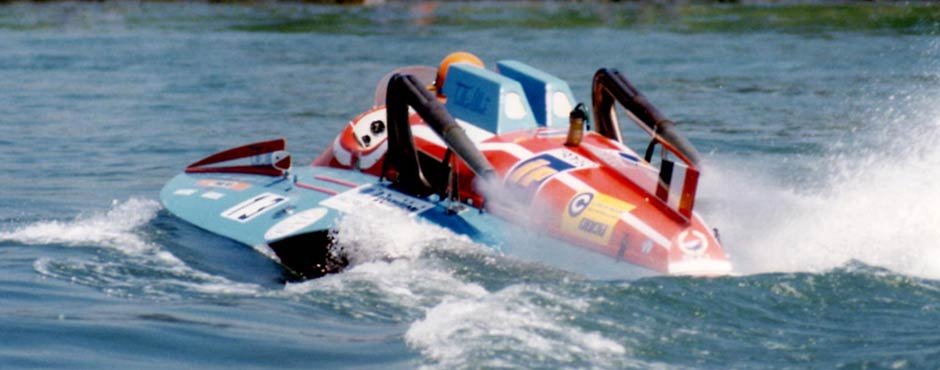Tecnique
The term racer identifies the inbord-raceboats. The "three-point" racers boats (from the '50) are so called because initially start totally on the water, but when increasing the speed they touch the water only with the propeller-blades and the final area of the two sponsons.


The right balance between the weights and the tunnel air under the hull make this boat very fast.
Various manufacturers have ventured in making these jewels. Here the list.
At the beginning of their history the three-point hydroplanes were classified by weight (up to 1969) and then, over the years through the adoption of UIM new regulations, for displacement (from 1970 onwards). We can therefore summarize the following categories:
- LX (1.000 cc) up to 1969
- LV (1.300 cc)
- LY (1.800 cc)
- LZ (2.500 cc) up to 1969
- KB (350 kg) up to 1969
- KC (500 kg) up to 1969
- KD (800 kg) up to 1961
- KD (900 kg) from 1962 to 1969
- APBA (91 inches)
- R1 (1.000 cc) since 1970
- R2 (1.500 cc) since 1970
- R3 and R3N (2.000 cc) since 1970
- R4 (2.500 cc) since 1970
- R5 (5.000 cc)
- R6 (7.000 cc)
- R°° (R unlimited, over 7.000 cc)
- formula Fiat 128 (1.300 cc)
The racers engines are almost exclusively from the automobile industry:
- Alfa Romeo 1300cc, 2000cc, 2500cc (6 inline cylinders or V8 Montreal engine)
- Lancia 2500cc (Flaminia)
- Fiat 1000cc, 1300cc (Fiat 128)
- BPM (marine only)
- Maserati
- ...and also Ferrari, BMW, Renault Gordini, Chevrolet, Pratt & Whitney























